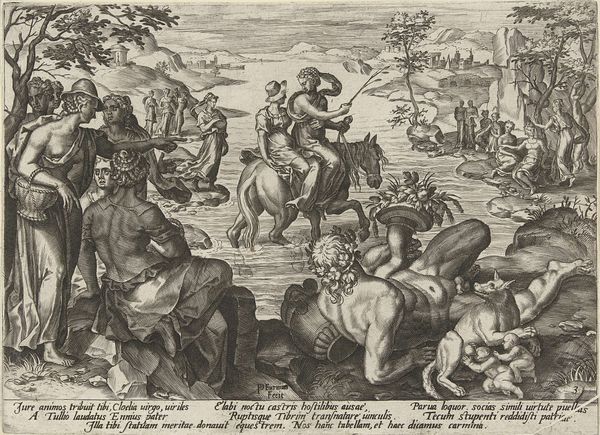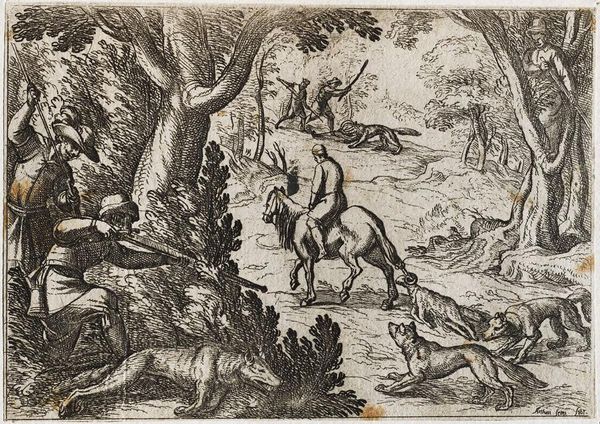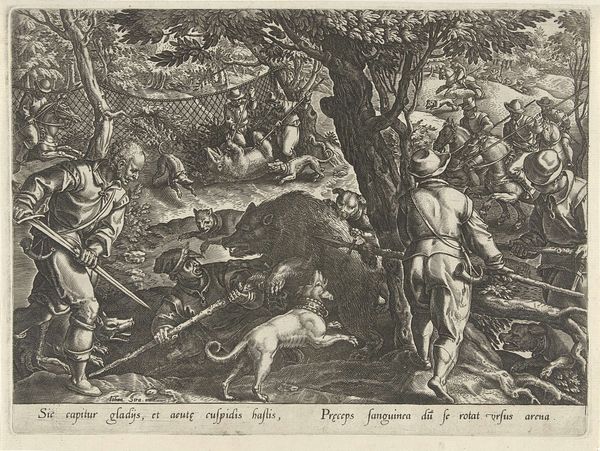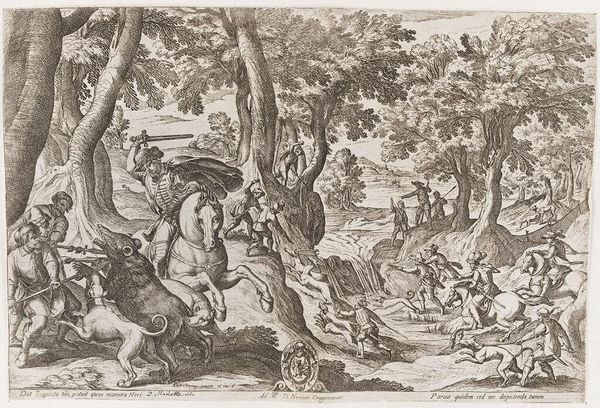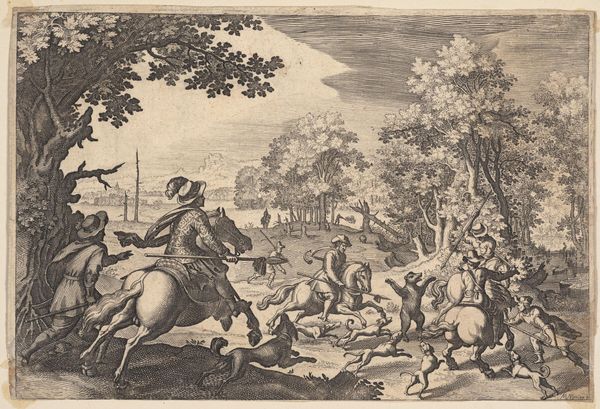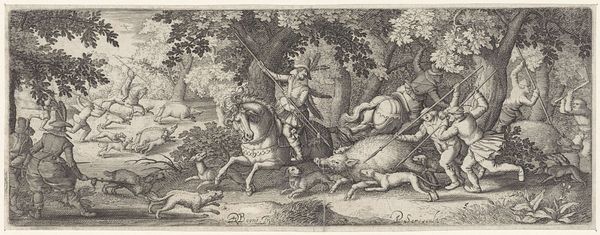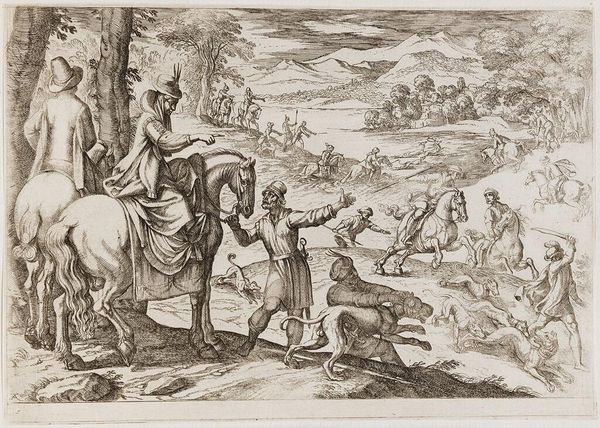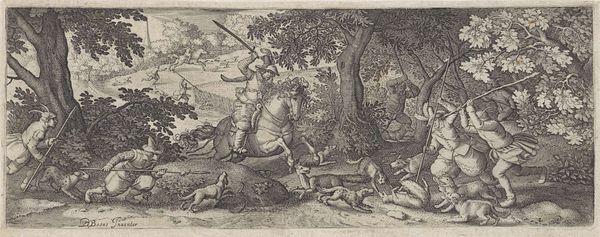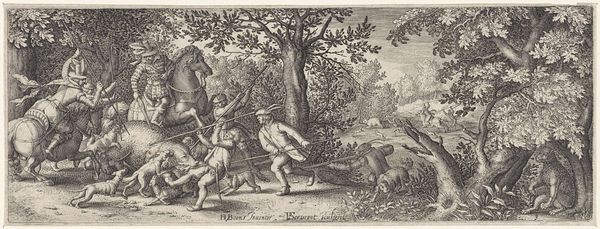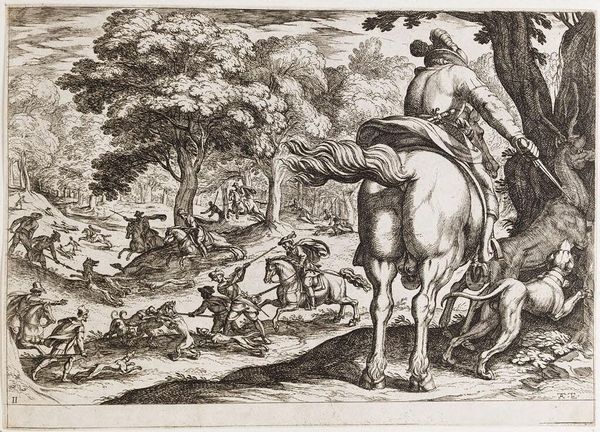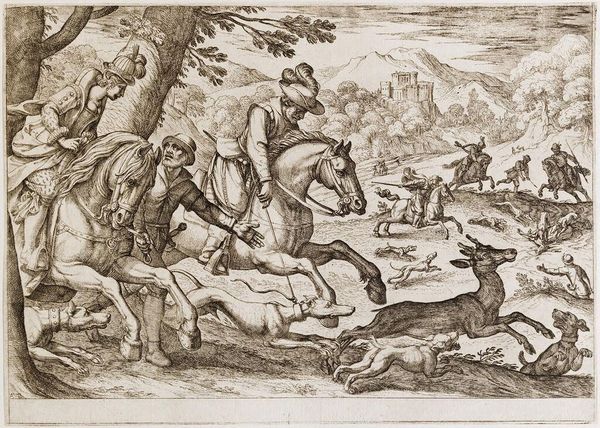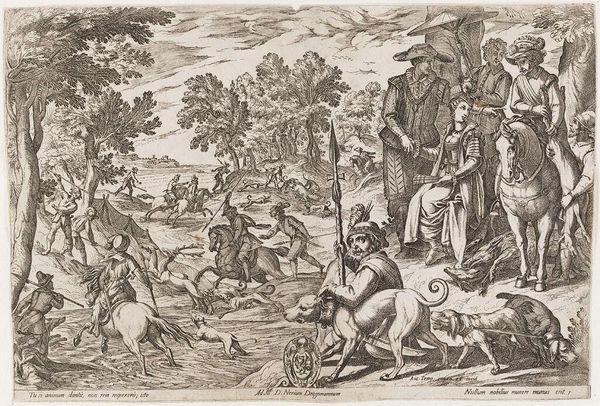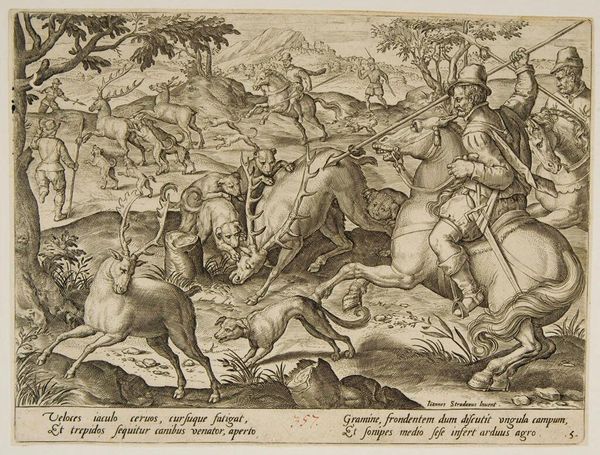
print, engraving
#
ink drawing
#
medieval
#
pen drawing
# print
#
landscape
#
figuration
#
genre-painting
#
history-painting
#
engraving
Dimensions: height 103 mm, width 272 mm
Copyright: Rijks Museum: Open Domain
Curator: Here we have Pieter Serwouters’ engraving, “Wolvenjacht,” created around 1612 and currently held in the Rijksmuseum. What strikes you first about this piece? Editor: It's incredibly busy, but also incredibly visceral. All that frantic energy, the dogs lunging, the hunters chasing... there's a real sense of pursuit. You can almost hear the baying. Curator: Absolutely. And what's fascinating is considering the production of prints like this in the 17th century. The meticulous work of engraving such detail into a metal plate! It's labor intensive, artisanal craft on display, a precursor to mass image production that was shaping visual culture at the time. These were meant to be circulated widely. Editor: Circulated to whom, exactly? This imagery tells a specific story, a kind of heroic narrative of man dominating nature, but at whose behest? Hunting, particularly wolves, had complex social and political dimensions, no? Curator: Precisely! We must consider how the wealthy landowners of the period sought to use artworks like this to underscore their power and standing. Owning land meant managing its resources, including dealing with animals like wolves that were deemed threats to livestock. The ‘Wolvenjacht,’ or Wolf Hunt, becomes less about the sport and more about reinforcing social hierarchies and control. Editor: The composition emphasizes this. The landscape recedes, framing the hunt as almost a theatrical performance staged for…us, the viewer, representing perhaps those who benefit from a stable social order maintained by the ruling class. Curator: And consider the materiality. An engraving, unlike a painting, allowed for multiple impressions, so this scene could be disseminated throughout the Dutch Republic, visually promoting this particular ideology to different social strata. The making of the image, and its dissemination, played a key role in shaping public opinion. Editor: It's compelling how the seemingly simple image of a hunt can unpack such complicated layers of social and political meaning. It is much more than genre-painting or landscape alone. Curator: Agreed, examining the means of production and its cultural context reveals so much about how art shapes our perception of history. Editor: Exactly. A great example of how studying art requires digging beyond the surface.
Comments
No comments
Be the first to comment and join the conversation on the ultimate creative platform.

